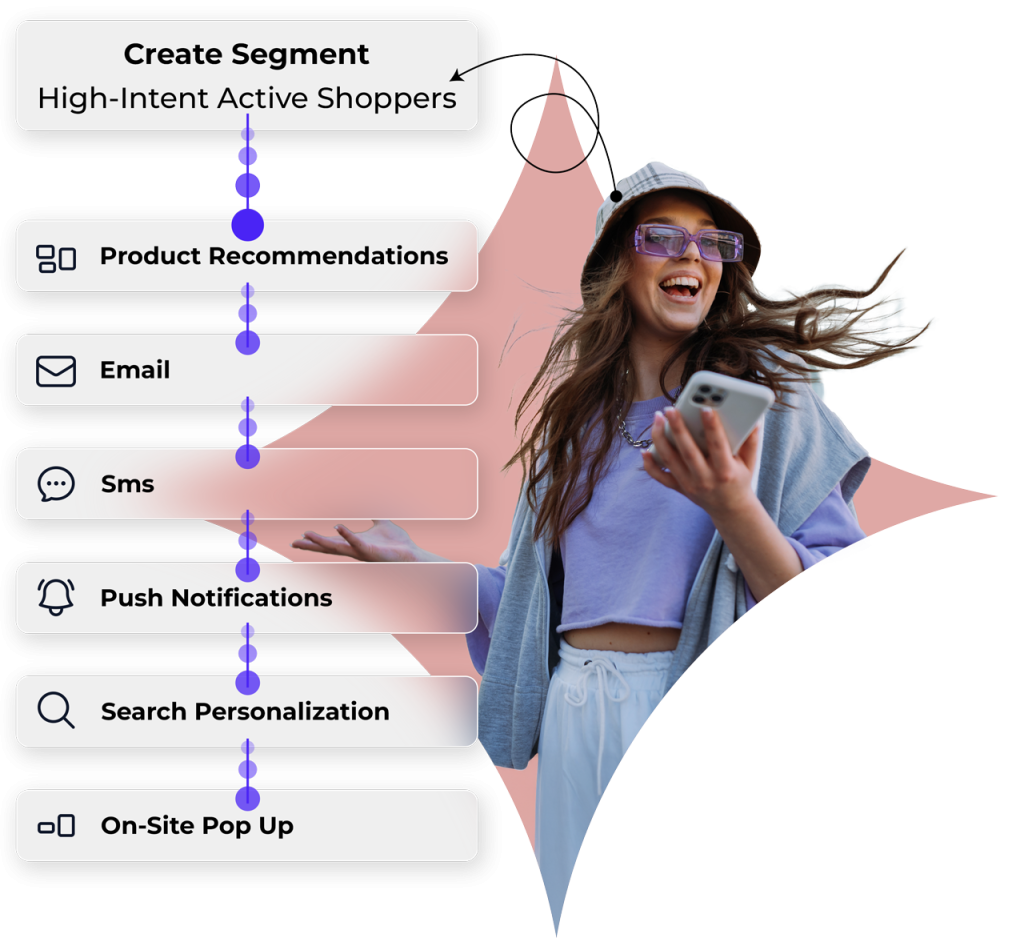Behavioral vs. Demographic Segmentation: Which One Is Right for Your Brand?

When it comes to customer segmentation, marketers often debate which approach delivers more actionable insights. While demographic data offers a snapshot of who your customers are, behavioral segmentation reveals how they actually interact with your brand and that difference can define the success of your personalization strategy.
What Is Demographic Segmentation?
Demographic segmentation divides your audience based on quantifiable traits such as:
- Age
- Gender
- Income level
- Education
- Occupation
- Location
It’s simple to collect and analyze, which makes it a natural first step for marketing campaigns. For example, an online jewelry brand might target high-income women aged 30–50 living in metropolitan areas.
Why Demographic Segmentation Works
- Simplicity: Demographic data is easy to gather and interpret.
- Broad targeting: Ideal for large-scale campaigns and new product launches.
- Stability: Demographics rarely change quickly, making it useful for long-term planning.
However, demographics don’t reveal why someone buys, only who they are. That’s where behavioral segmentation becomes essential.
What Is Behavioral Segmentation?
Behavioral segmentation focuses on how customers engage with your brand. Instead of static traits, it uses dynamic, action-based data such as:
- Purchase frequency and order value
- Website browsing history (pages viewed, time on site)
- Email and ad engagement
- Cart activity (added, abandoned, or purchased)
- Customer journey stage (new, repeat, or dormant)
Why Behavioral Segmentation Works
- Action-oriented: It’s based on measurable user behavior, not assumptions.
- Personalized: Enables campaigns that adapt to each customer’s real-time intent.
- Dynamic: As behaviors change, campaigns can adjust automatically—especially when powered by a Customer Data Platform (CDP) like PersonaClick’s CDP module.
Example: A shopper browsing running shoes frequently should receive different messages than one who occasionally views office furniture. Behavioral data ensures each receives relevant offers at the right moment.
Behavioral vs. Demographic Segmentation: When to Use Each
Use Demographic Segmentation When:
- Launching new products and needing broad audience insights
- Running brand awareness campaigns
- Defining general personas and audience clusters
Use Behavioral Segmentation When:
- You aim to personalize campaigns at scale
- Retaining high-value customers or re-engaging inactive ones
- Triggering automated workflows (e.g., abandoned cart recovery, upsell flows)
For the best outcomes, combine both approaches. Demographics give you a stable foundation, while behavioral insights refine your targeting and messaging.
Combining Both for Data-Driven Personalization
For example:
- Demographic layer: Males, 25–40, living in urban areas
- Behavioral layer: Viewed fitness products in the past 30 days, added items to cart, but did not complete checkout
This hybrid segmentation allows marketers to craft hyper-relevant campaigns that boost engagement and conversion rates.
If you’re using PersonaClick, combining Dynamic Segmentation and Personalized Automation modules gives you this 360° customer view automatically.
The Role of Data Quality
Both segmentation types depend on data accuracy. Outdated or fragmented records can harm campaign relevance. A clean, unified CDP ensures that:
- Demographic data is verified and consistent
- Behavioral signals (clicks, views, purchases) are captured in real-time
FAQs About Behavioral Segmentation
- Is behavioral segmentation better than demographic segmentation?
It depends on your goals. Behavioral segmentation is more effective for personalization and retention, while demographics help define target audiences broadly. - How can behavioral segmentation improve conversions?
By analyzing user actions, you can deliver contextually relevant offers, like abandoned cart reminders or cross-sell recommendations, which directly boost conversion rates. - What tools help manage behavioral data?
Platforms like PersonaClick integrate behavioral analytics, segmentation, and automation, allowing marketers to act on real-time insights without complex setup.
The Bottom Line
Demographic segmentation helps identify who your customers are, but behavioral segmentation tells you what they want and when they want it. Combining both creates a data-driven strategy that boosts engagement, conversions, and long-term loyalty.
With the right technology,like PersonaClick’s unified CDP,you can deliver hyper-personalized experiences at scale, turning behavioral insights into measurable growth.